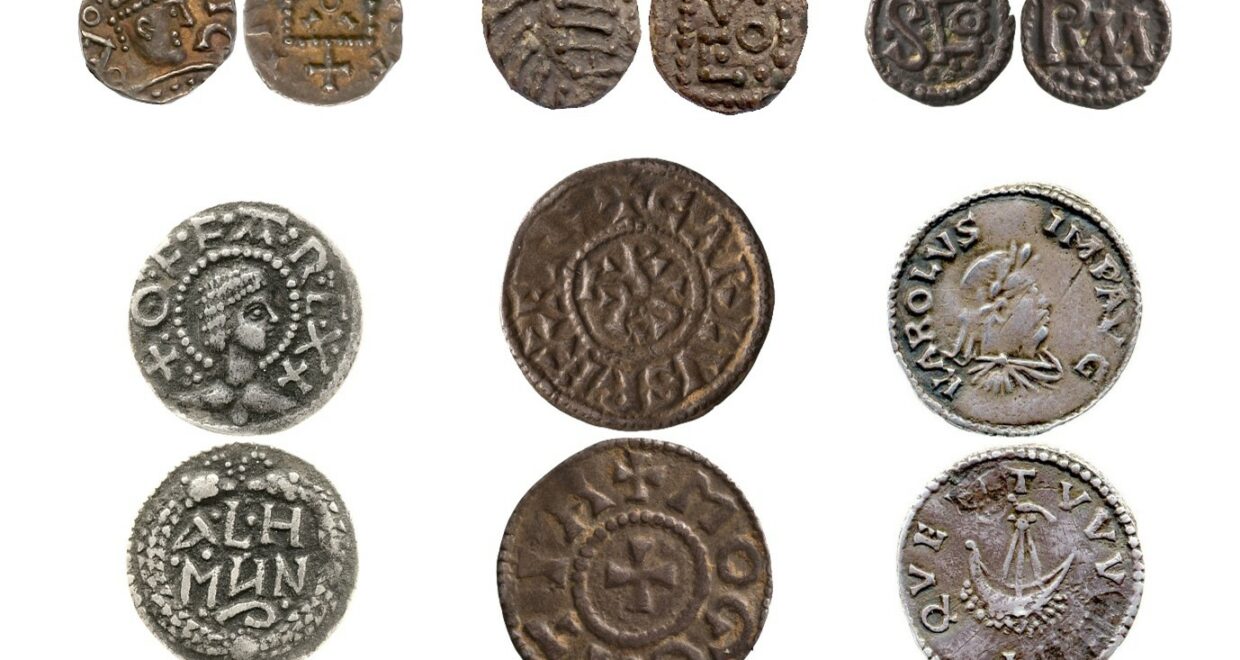Origins of medieval coinage revealed
If you were living in north-west Europe in the late 7th century, you would have experienced something that your parents, grandparents, and more distant ancestors had not: coinage. Silver coins were re-introduced by the Anglo-Saxons and Franks c. 660 AD after a post-Roman hiatus of some 200+ years. This re-introduction stimulated trade and urbanisation, and meant ordinary people grew accustomed to reckoning and valuing in coin – much as we do today. But why and how did it occur? One way of addressing this question is to identify where the silver in the coins came from.
In the past, researchers have made several suggestions as to possible sources. A recent idea is that the silver was newly-mined metal from a major lead/silver mine in south-west France, at Melle. Roman scrap silver, and silver from economies that continued to produce silver coins and artefacts – such as the Umayyad Caliphate and Byzantine Empire – have also been suggested. Until now, however, these suggestions have been a best guess, rather than supported by any tangible evidence.
Geochemistry gives entirely new insights into the question of silver sources. The earliest pennies are silver, but they also contain small and varying amounts of other elements including lead, gold and bismuth, which can be used to help provenance the silver. Measuring the ratios of the stable isotopes of lead contained within the silver can reveal the age of the ore body from which the silver derived, enabling us to rule out some candidate sources, and include others. Gold and bismuth contents also relate to the original ore source, providing further indicators of provenance.

Provenancing silver through geochemistry is a nuanced, but powerful, methodology, especially with the advance of minimally-invasive sampling methods, such as lasers. Recent work by one of us (JK) in Oxford has used this approach to identify sources of silver used in early Islamic dirhams, as well as in Viking silver. The reason the approach works is the key insight that the mixing and/or refining of silver is much less of an issue than previously hypothesised. Silver refining occurs, but is not widespread, while the mixing of silver sources can be detected by the combination of lead isotope and trace element analysis. This previous work gave us hope that the same approach would yield insights into the origin of silver in early European coins.
We analysed 49 coins minted between c. 660 and c. 820, encompassing both the earliest post-Roman coins (pre-750 coins) and later coins (post-750) known as ‘regal’ types because they carry the names of kings, like Offa and Charlemagne. The results were striking.
It was immediately clear that Melle could not be a source of silver for the earliest coins – their lead isotopes pointed instead to a non-European source. This source is shared only by Byzantine lead and silver artefacts (from the eastern Mediterranean), making it highly likely that they were produced from Byzantine silver that had reached northern Europe up to 100 years before (such as that contained in the famous burial from Sutton Hoo, dated to c. 625). The implication is that Anglo-Saxon elites had access to significant quantities of Byzantine silver, something that dramatically alters our view of how economically and politically connected they were.
By contrast, the lion’s share of the ‘regal’ coins, both from England and the Continent, align with Melle. It appears that, by the later eighth century, the Carolingian state had control over this vital resource. This has implications for contemporary power politics, with Anglo-Saxon kingdoms depending on shipments of silver from the Continent.
The demand for coinage might reflect a desire to trade with nearby economies or the need to pay taxes to increasingly powerful institutions. But what is clear is that the re-introduction of coinage wasn’t a reaction to the sudden availability of a new source of silver. Instead, it was a conceptual shift: a social as much as an economic decision to transform ancestral treasures into low-value coin.
This research raises many more questions, such as how and when Byzantine silver travelled to northern Europe – something that we are pursuing with further analyses of the earliest European pennies. Above all, geochemical signatures in metal can shed new light into Europe’s connected past.
Byzantine plate and Frankish mines: the provenance of silver in north-west European coinage during the Long Eighth Century (c. 660–820) by Jane Kershaw, Stephen W. Merkel, Paolo D’Imporzano and Rory Naismith is out now, open access, in Antiquity.







Fascinating.
It does help paint a picture of what was going on.
Every little clue like this just fills in the gaps in our story.
Thanks